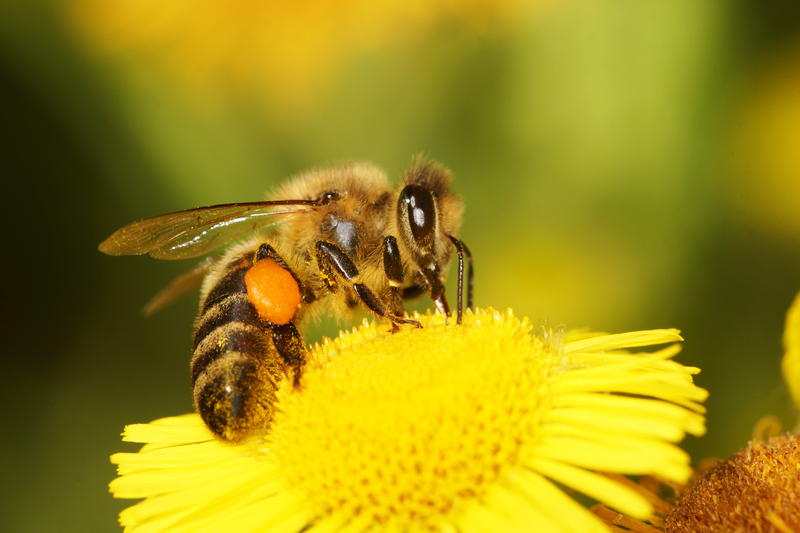Shade-Loving Climbers: Breathing Life into Dim Spaces
Posted on 15/05/2025
Shade-Loving Climbers: Breathing Life into Dim Spaces
Transforming dim or shaded areas of your garden into vibrant, lush green landscapes can indeed be a challenging task. Nonetheless, with the right selection of shade-loving climbing plants, it's absolutely possible to bring life and elegance to those darker spots. Let's dive into how these versatile plants can enhance your space and the best types to consider for your specific needs.
Understanding Shade-Loving Climbers
Climbing plants are nature's curtains, adding an element of green grandeur to any landscape. They climb vertically to maximize space, making them perfect for small gardens or for adding height and structure to larger areas. Shade-loving climbers are especially valuable where sunlight is scarce, bringing vibrancy and depth to otherwise overlooked sections of your garden.
Why Choose Shade-Tolerant Climbers?
Gardens with ample shade might seem limiting, but selecting the proper climbers suited for shady areas offers numerous benefits:
- Aesthetic Enhancement: They provide lush greenery that can conceal less appealing structures or bare walls.
- Increased Biodiversity: Many of these climbers support wildlife by offering food and habitat for birds, bees, and butterflies.
- Cooling Effects: Climbers can help lower temperatures by shading walls and other surfaces.

Top Shade-Loving Climbing Plants
Here are some fantastic shade-tolerant climbing plants that can beautify your garden:
1. Ivy (Hedera helix)
One of the most popular climbers, English Ivy thrives in the shadiest spots. Its evergreen leaves make it an all-year-round favorite. However, it's essential to manage its growth as it can become invasive.
2. Climbing Hydrangea (Hydrangea petiolaris)
An excellent choice for those looking to add floral beauty in shadier areas, Climbing Hydrangea produces white, lace-cap flowers and can climb walls and fences with minimal assistance.
3. Clematis (Clematis 'Nelly Moser')
With its magnificent large, mauve-pink flowers marked with crimson, Clematis 'Nelly Moser' can brighten up any shaded spot, particularly effective on north-facing walls.
4. Star Jasmine (Trachelospermum jasminoides)
Though it prefers partial shade, Star Jasmine is an evergreen climber with fragrant white flowers, ideal for creating aromatic environments.
5. Japanese Honeysuckle (Lonicera japonica)
This climber is known for its sweetly scented blooms, capable of thriving in partial shade, making it a perfect option for those dim garden areas.
Caring for Your Shade-Loving Climbers
Understanding Soil and Nutrient Needs
Most shade-loving climbers prefer well-drained, fertile soil. Adding compost and organic matter improves soil quality, ensuring that your plants receive essential nutrients. Testing soil pH levels can further tailor soil amendments for specific plants' needs.
Watering Effectively
Shade-grown climbers don't dry out as quickly as their sun-loving counterparts, reducing water needs. However, consistent watering is necessary, particularly during dry spells and initial planting stages.
Pruning and Maintenance
Regular pruning helps manage climbers' growth and encourages healthy blooming. Remove dead or damaged stems and control invasive spread through strategic trimming.
Designing with Shade-Loving Climbers
Integrating shade-loving climbing plants into your garden design requires some creativity but yields rewarding results. Here are a few design ideas to consider:
Vertical Gardens
Create a vertical garden using trellises, pergolas, or wall-mounted structures to help climbers enhance vertical spaces. This not only saves ground space but adds dynamic height to your garden.
Natural Privacy Screens
Use shade-loving climbers to form natural privacy screens. These can be especially useful in urban gardens where close proximity to neighbors necessitates some seclusion.
Accent Features
Position climbing plants strategically to highlight specific garden features, such as pergolas, arches, or entrances, enhancing aesthetics and structure.

Choosing the Right Climber for Your Space
Selecting the right shade-tolerant climber is crucial for a thriving garden. Consider the following factors:
- Space Available: Ensure you have adequate vertical support for your chosen plant's growth habit.
- Climate Zone: Compatibility with your local climate will affect plant growth and resilience.
- Maintenance: Some climbers require more maintenance than others; choose according to your availability to dedicate to gardening tasks.
Conclusion
Shade-loving climbing plants are a powerful tool in transforming shaded spaces into lush, inviting landscapes. By selecting the right varieties and employing strategic design and care tactics, even the darkest corners of your garden can become a verdant, vibrant haven.
With these insights and suggestions, you're well-equipped to embark on your journey of incorporating shade-loving climbers into your green sanctuary, breathing life into dim spaces one vine at a time.



